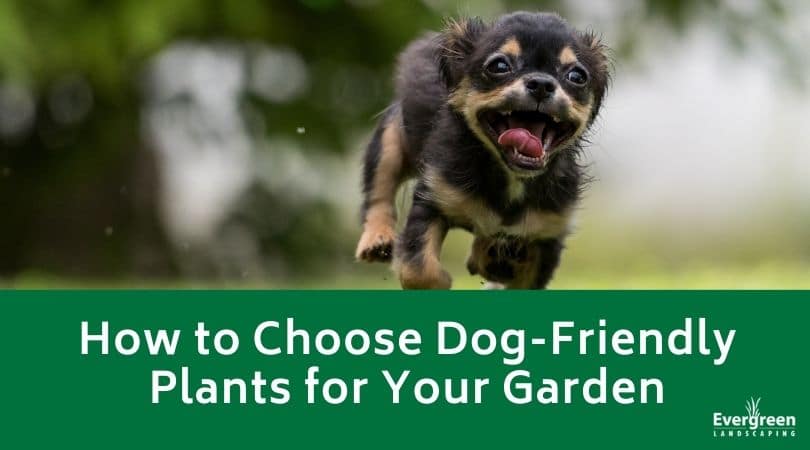
Gardens can be stimulating, wonderful spaces for your dog to roam. But, it’s easy for dogs to cause havoc by digging up plants. Gardens can also contain hazards in the form of plants that are potentially toxic to dogs. So, unless you plan to ban your dog permanently from the garden, the following tips will help you pick out dog-friendly plants for your garden.
Tip One – Plant Dog-Friendly Plants
You can start by doing a little research and looking for plants that are beautiful and safe for your dog to be around. A few of these plants include camellias, snapdragons, sunflowers, roses, impatiens, cornflowers, Michaelmas daisies, and calendula. For vegetables and herbs, you can plant dill, purple basil, carrots, spinach, kale, green beans, beets, celery, rosemary, peppermint, parsley, and oregano.
Tip Two – Make the Garden Stimulating
If you want the dog to come in the garden with you, you have to make it stimulating for them. You can set up clearly defined digging or play areas away from your plants. Another option would be to create different routes through the space. Ornamental grasses and plants like salix provide texture and entertainment as they sway and dance in the wind.
Tip Three – Get Hardy Plants
Your dog may have the time of their lives running through the garden, but they can easily damage young plants. They may dig or run through your plants, and this can damage any with delicate stems. Try to plant robust, large perennials in your garden. Astilbe, nepeta, and hardy geranium are all good picks. Avoid the Pelargonium species of geranium as it is toxic to dogs. Shrub roses and viburnum can form a sturdy backbone for your garden.
Tip Four – Avoid Known Toxic Plants
Although this one sounds simple, you may be surprised at how many plants are toxic to dogs. Aconite, chrysanthemum, daffodil, buttercup, delphinium, daphne, hydrangea, foxglove, oak, wisteria, tomato, and yew are all examples of potentially toxic plants. Don’t court danger and plant them, hoping your dog stays out. It doesn’t take much for them to get sick and you to have an emergency vet bill to worry about.
Tip Five – Elevate the Plants
Strategically placing or elevating your garden bed is a great way to restrict your dog’s access to it. You can build raised plant beds, or you can make them by planting your items in large pots or sturdy horse troughs. Plant shelves or hanging baskets are other good ideas. If all else fails, you can fence in your garden to ensure your dog doesn’t get in and damage something or get sick.
Tip Six – Do Your Research
There are thousands of different flowers and plants you could choose for your space. If you have perennials in place already, take inventory of them. Take your list and do your research to see if any of them are poisonous. You can do a quick Google search, or you can take your plant list to your local nursery or garden center and ask if they’re safe to have around dogs.
Contact Evergreen Landscaping
Do you have questions or concerns about your plants and want to know if they’re safe for your dog? If so, contact us. Our friendly and professional staff will help you pick out gorgeous plants that are safe for Fido to play around.
